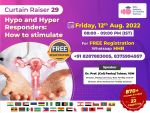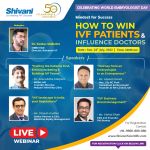
IVF NewsNews: Placenta and organ formation observed in mouse embryo models
Dr Rachel Montgomery 08 August 2022
Researchers in Israel have observed the formation of the placenta, yolk sac and some organs, in embryo models derived entirely from mouse embryonic stem cells. The research was performed at the Weizmann Institute of Science in Rehovot, and was published in the journal Cell. Previous work by the team published in Nature last year had focused on developing ways to successfully grow embryos outside of the uterus, or ex utero, a process employed again for this study. However previous work by the team had focused on growing embryos removed from a mouse uterus after two days, in the simulated uterus they developed, whereas their latest study shows embryo models made entirely from embryonic stem cells could reach the stage where organs start to form, outside of the uterus. They were also able to induce embryonic stem cells to produce cells and structures that would go on to develop into the placenta, amniotic membrane and yolk sac. Lead researcher Professor Jacob Hanna said: 'Until now, in most studies, the specialised cells were often either hard to produce or aberrant, and they tended to form a mishmash instead of well-structured tissue suitable for transplantation. We managed to overcome these hurdles by unleashing the self-organisation potential encoded in the stem cells.' To develop the structures, the researchers took mouse embryonic stem cells, and divided them into three groups. One group was destined to develop into embryonic organs, while the other two were treated in a way to give rise to either placental cells or the yolk sac – so-called extra-embryonic structures that are required to support the developing embryo. All three cell types were then mixed together, and incubated in the artificial womb the team had previously developed. Soon after being mixed together, the cells self-organised into aggregates. However, overall the experiment was highly error-prone as 99.5 percent of these aggregates failed to develop further. Nonetheless, 0.5 percent (around 50 of 10,000 aggregates) did go on to form spheres, which later changed further into elongated, embryo-like structures. These were allowed to develop for eight and a half days, a third of the gestation of a mouse. By this point, they had formed a beating heart, blood stem cell circulation, rudimentary brain with folds, a neural tube and a gut tube. Gene expression patterns in the embryo models were mapped and researchers found they were 95 percent similar to natural mouse models. Dr James Briscoe, principal group leader and assistant research director, at the Francis Crick Institute, said: 'The study has broad implications as although the prospect of synthetic human embryos is still distant, it will be crucial to engage in wider discussions about the legal and ethical implications of such research.' Sources and References
[ Full Article ] News: Topic - 𝙃𝙮𝙥𝙤 & 𝙃𝙮𝙥𝙚𝙧 𝙍𝙚𝙨𝙥𝙤𝙣𝙙𝙚𝙧𝙨: 𝙃𝙤𝙬 𝙩𝙤 𝙨𝙩𝙞𝙢𝙪𝙡𝙖𝙩𝙚?
Dr. Prof (Col) Pankaj Talwar VSM 08 August 2022

✅ Coming Friday 12th Aug 2022 - 𝙇𝙞𝙫𝙚 𝙯𝙤𝙤𝙢 𝙨𝙚𝙨𝙨𝙞𝙤𝙣 - Evening 7:45p𝙢 (𝙄𝙎𝙏)
𝙎𝙥𝙚𝙖𝙠𝙚𝙧 - 𝘿𝙧. 𝙋𝙧𝙤𝙛. (𝘾𝙤𝙡) 𝙋𝙖𝙣𝙠𝙖𝙟 𝙏𝙖𝙡𝙬𝙖𝙧, 𝙑𝙎𝙈!
Topic - 𝙃𝙮𝙥𝙤 & 𝙃𝙮𝙥𝙚𝙧 𝙍𝙚𝙨𝙥𝙤𝙣𝙙𝙚𝙧𝙨: 𝙃𝙤𝙬 𝙩𝙤 𝙨𝙩𝙞𝙢𝙪𝙡𝙖𝙩𝙚?
#𝙅𝙤𝙞𝙣 𝙎𝙥𝙡.𝙒𝙝𝙖𝙩𝙨𝙖𝙥𝙥 𝙂𝙧𝙤𝙪𝙥 𝙩𝙤 𝙜𝙚𝙩 𝙕𝙤𝙤𝙢 𝙎𝙚𝙨𝙨𝙞𝙤𝙣 𝙞𝙣𝙫𝙞𝙩𝙚 𝙡𝙞𝙣𝙠: https://chat.whatsapp.com/ClRzEOauuRfBAbru5kJQgx
𝙊𝙋𝙀𝙉 𝙁𝙊𝙍 𝘼𝙡𝙡!
𝙁𝙤𝙧 𝙁𝙧𝙚𝙚 𝙍𝙚𝙜𝙞𝙨𝙩𝙧𝙖𝙩𝙞𝙤𝙣 𝙤𝙧 𝙢𝙤𝙧𝙚 𝙞𝙣𝙛𝙤 :- https://wa.me/918287883005
#hyporesponders #ovulationinduction #iui #ivf #onlineivfcourses #elearning #webinar #MD #MS #IVFCourses #onlinecourses #ivfonlinecourses #reproductiveultrasound #usg #et #OPU #iceat #OBG #DGO #gynaecologist #obstetrics #certification #semenanalysis #ART #ARTTraining #EmbryologyTraining #Andrology [ Full Article ] News: ART & Embryology training program
Chennai Fertility Center and Research Institute 05 August 2022

September 2022 Training Batch Schedule - 5th Sep - 19th Sep 2022 The International School of Embryology was established to offer training for clinicians in advanced reproductive technologies. Our skill and precision to all aspirants help them to know in-depth knowledge and experience. The members of our teaching faculty aim to bring doctors and embryologists to the highest level of knowledge about reproductive techniques and practical capability in the field. Our courses cover basics in Andrology, embryology, ICSI, and cryosciences (Hands-on). Limited Seats. For admission Contact 9003111598 / 8428278218 [ Full Article ] News: Differences in IVF-conceived children's size disappear by adolescence
Dr Maria Botcharova 03 August 2022
A large multi-cohort study has shown that adults conceived following fertility treatment have no difference in height, weight, and body fat to those who were conceived naturally. While children conceived via IVF and ICSI were shorter, lighter and thinner than their naturally conceived counterparts, these differences were shown to disappear by the time both groups reached late adolescence. 'This is important work,' said Dr Ahmed Elhakeem, senior research associate in epidemiology at Bristol University and lead author of the paper. 'Parents and their children conceived by [assisted reproductive technologies] ART can be reassured that this might mean they are a little bit smaller and lighter from infancy to adolescence, but these differences are unlikely to have any health implications'. The study published in JAMA Network Open aligns with previous research, which showed children conceived via IVF have increased risk of preterm birth, as well as being smaller and lighter, but which have mostly focused on the perinatal period, in the first year of the child's life. It used data collated from 158,066 participants from Europe, Asia and Canada, aged between several weeks and 27 years. Of these 4329 had been conceived via IVF or ICSI. 'This important research is only possible through large scale international collaboration and longitudinal health studies, where participants contribute health data throughout their entire lives,' said Professor Deborah Lawlor, another author of the study, MRC Investigator and British Heart Foundation chair. The study showed that any differences in height, weight and BMI diminished steadily as children grew older, with the difference completely diminished in adolescents aged between 14 to 17 years. A similar pattern was seen in weight, waist circumference, body fat percentage, and fat mass index showed similar results to BMI. Since its first use in 1978 IVF has contributed to over eight million births globally. 'In the UK just over one in 30 children have been conceived by ART, so we would expect on average one child in each primary school class to have been conceived this way.' Dr Elhakeem commented. Peter Thompson, chief executive of the Human Fertilisation and Embryology Authority added 'Around one in seven couples have difficulty conceiving in the UK which leads to around 53,000 patients a year having fertility treatment (IVF or donor insemination). The findings from this study will come as a welcome relief to these patients who begin treatment in the hope of one day having healthy children of their own'. Sources and References
[ Full Article ] News: Egg cells remain dormant for decades by putting mitochondria to sleep
Eleanor Gallegos 03 August 2022
Early human oocytes remodel their metabolic activity, which enables them to remain dormant and reproductively viable for decades. Humans form oocytes during fetal development. These oocytes then undergo cellular arrest and remain dormant in the ovaries for up to 50 years. During dormancy the oocytes maintain mitochondrial activity to generate energy for essential cell processes. This energy generation produces reactive oxygen species (ROS) as by-products. ROS are highly reactive oxygen-containing molecules which are harmful in high concentrations and can damage oocytes causing cell death. A paper published in Nature has revealed that oocytes can alter their metabolic pathways to limit the production of ROS. 'Humans are born with all the supply of egg cells they have in life. As humans are also the longest-lived terrestrial mammal, egg cells have to maintain pristine conditions while avoiding decades of wear-and-tear.' said Dr Aida Rodriguez, postdoctoral researcher at the Centre for Genomic Regulation (CRG) in Barcelona, Spain, and first author of the study. 'We show this problem is solved by skipping a fundamental metabolic reaction that is also the main source of damage to the cell. As a long-term maintenance strategy, it's like putting batteries on standby mode. This represents a brand new paradigm never before seen in animal cells,'. The researchers studied Xenopus (African clawed frog) and human oocytes in early- and late-stages of development. Live imaging showed that early human and Xenopus oocytes do not generate any detectable ROS signal. Mitochondria contain five complexes, I-V, which perform the chemical reactions needed to generate energy in a cell. The researchers inhibited each of these complexes in Xenopus oocytes and found that while early- and late-stage oocytes died upon inhibition of complexes II-V, 78 percent of early-stage oocytes survived if complex I was inhibited, suggesting this complex is not used at this stage of development. The researchers then examined whether the subunits which make up complex I are depleted in early human oocytes and found that they were either absent or at very low levels. When studying ROS levels and complex I assembly, they found that ROS start to build up as complex I is formed. These results show that complex I is absent in early human oocytes which limits ROS production and the related cell damage. This metabolic remodelling helps maintain the reproductive capacity of early oocytes for the years in which they remain dormant. The researchers have proposed that the absence of complex I in early human oocytes could be exploited for other purposes such as cancer treatment. 'Complex I inhibitors have previously been proposed as a cancer treatment. If these inhibitors show promise in future studies, they could potentially target cancerous cells while sparing oocytes,' explained senior author Dr Elvan Böke, group leader in the Cell and Developmental Biology programme at the CRG. These results could have life-changing effects on the quality of life of young women post cancer treatment by avoiding infertility which can result from chemotherapy. Sources and References
[ Full Article ] News: DNA duplication errors implicated in embryo aneuploidy
David Gerard O'Rourke 03 August 2022
Mechanisms leading to aneuploidy in embryos can start right from the first DNA duplication, a new study has shown. Scientists had thought aneuploidy arose in some embryos due to problems with the activity of microtubule spindles, the cell apparatus that pulls the two sets of chromosomes apart during mitosis. Now a study of human and mouse embryos and oocytes published in Cell shows most of these mistakes are not primarily due to the spindles, but spontaneous errors in DNA duplication occurring during the earliest stages of mitosis in the one-cell stage. These errors cause the spindles to malfunction and place the wrong number of chromosomes in each daughter cell, leading to aneuploidy. 'This has largely been overlooked in previous studies – because why would the embryo allow the integrity of the genome to be compromised when this is such a critical requirement for normal development?' said Dr Dieter Egli, assistant professor at Columbia University, New York and the study's lead author. During IVF, only around 30 percent of human embryos make it to the blastocyst stage and most embryos stop growing within a few days of fertilisation. Identifying why this is could help researchers identify targets for predicting or even improving IVF success rates. A recent study looked at the reasons why some IVF embryos stop dividing, and found some go into a senescent-like state. While PGT-A is used to identify aneuploid embryos before transfer, whether or not this screening can improve the likelihood of a live birth for women under the age of 35 is the subject of some controversy. In this latest study researchers found spontaneous DNA errors which caused asymmetric progression of the replication fork could lead to weaknesses and breaks in the DNA. This incomplete and inaccurate duplication of DNA led to breaks in the chromosomes which in turn caused dysregulation of the spindles and aneuploidy. DNA methylation could be the cause of the slow progression of the replication fork, the authors hypothesised, along with inherited DNA damage. The areas of the chromosomes that were most likely to be affected by DNA strand breaks were mostly in non-protein coding regions of the genome. Sources and References
[ Full Article ] News: Microscopic structures in semen could affect implantation
Joseph Hawkins 03 August 2022
Microscopic sacs, known as exosomes, present in semen may shed light on previously unexplained cases of male infertility. Unexplained male infertility refers to a diagnosis of males who have undergone routine semen analysis which had not identified any abnormalities. In the UK, around 25 percent of cases of male infertility are unexplained. At the recent annual meeting of the European Society of Human Reproduction and Embryology (ESHRE) Hadis Gholipour, a PhD student at the Iran University of Medical Sciences involved in the work, told the conference 'They're a challenging group to treat', New Scientist reported. Exosomes are formed within a cell and typically contain cellular protein, DNA and RNA, which can be transferred to other cells as a form of cellular communication. Importantly, exosomes are present within seminal fluid and are known to bind to sperm and promote maturation. It has previously been shown that exosomes present in the semen of males with fertility problems differ from those found in the semen of males without fertility issues. The new research presented at ESHRE as an abstract which was published in the Journal of Human Reproduction, has shown that exosomes in the semen of infertile males may negatively influence the receptivity of the uterus lining to embryo implantation. The research team isolated exosomes from semen samples of ten males undergoing infertility treatment and ten sperm donor males without fertility problems. Cells from the uterus lining, known as the endometrium, were collected from six women during the follicular phase of the menstrual cycle, also known as the proliferative phase as the endometrium thickens during this time. These endometrial epithelial cells were cultured and incubated with the exosomes for six or 24 hours before the team analysed gene expression patterns. 'The incubated exosomes bind to the endometrial cells and can be found inside the cells. Once inside the cells, the exosomes can deliver diverse signals,' said Gholipour. Genes known to promote uterus receptivity were found to be significantly downregulated following incubation with the exosomes of males diagnosed with unexplained infertility. The research team have speculated that the exosomes of infertile males can reduce uterus receptivity by altering gene expression patterns and may be a cause of their infertility. The results presented at ESHRE represent only preliminary findings and further evaluation of a larger sample size will be undertaken soon. Moreover, the research team intend to assess the exosomal composition of fertile and infertile males to build upon their understanding of the role of exosomes in conception. Sources and References
[ Full Article ] News: Light shed on sperm DNA packing process
Clíona Farrell 03 August 2022
Crucial role of sperm DNA-packaging protein has been identified in mice, which causes infertility when truncated. During sperm production in humans, 23 DNA chromatin strands must be tightly wound into the head of the sperm. Because sperm cells are significantly smaller than typical human cells, sperm-specific proteins called protamines are required to tightly package and protect DNA during this process. Now, researchers from Germany have identified a previously unknown mechanism by which protamine 2 (PRM2) is required for fertility in mice. 'Most mammals seem to produce only one type of protamine, PRM1. In humans, but also rodents like mice, it's different – they have a second type, PRM2', said first-author of the study, Dr Lena Arevalo, University of Bonn, Germany. DNA is normally packaged more loosely around histone proteins, however, during sperm generation, histones are replaced by protamines. The N-terminal domain of PRM2 is normally cleaved during sperm DNA packaging. In this study, published in PLOS Genetics, the authors generated a mouse model in which the PRM2 N-terminal domain was absent, leaving only a truncated protein behind. This led to inefficient transfer of DNA from histones to protamines, and ineffective DNA packaging into sperm. Importantly, when mutant male mice which have only the truncated form of PRM2 were mated with healthy female mice, no offspring were produced. The mice were infertile. 'Proper PRM2 cleaving, therefore, seems to be crucial for successful reproduction, yet, the function of the [PRM2 N-terminal] domain and PRM2 processing are unknown to date' the authors explained in their paper. Further biochemical analysis showed that the sperm of these mice had impaired motility, abnormal shape and their DNA was fragmented, highlighting the importance of an intact N-terminal domain of PRM2. Unlike other species, having this second protamine is specific to mice and primates. As this DNA packaging process is thought to occur using similar mechanisms in humans, the researchers hypothesise that having a faulty PRM2 protein may cause infertility in men. 'We were able to provide a first glimpse into the function of cleaved PRM2 and PRM2 processing, that opens up multiple avenues for further investigation', concluded the authors. Sources and References
[ Full Article ] News: ART Guidelines: Notifications, Consent
Dr. Prof (Col) Pankaj Talwar VSM 26 July 2022

Join Special Curtain Raiser Class 28 𝙏𝙤𝙥𝙞𝙘: ART Guidelines: Notifications, Consent 𝘿𝙖𝙩𝙚: Friday 29th July. 2022 𝙏𝙞𝙢𝙚: 𝙨𝙝𝙖𝙧𝙥 8:00 PM - 9:00PM (IST) 𝙎𝙚𝙚 𝙮𝙤𝙪 𝘼𝙡𝙡 𝙤𝙣 Friday! 𝙁𝙤𝙧 𝙢𝙤𝙧𝙚 𝙞𝙣𝙛𝙤 𝙤𝙧 𝙩𝙤 𝙗𝙚 𝙩𝙝𝙚 𝙥𝙖𝙧𝙩 𝙤𝙛 𝙎𝙥𝙚𝙘𝙞𝙖𝙡 𝙒𝙝𝙖𝙩𝙨𝙖𝙥𝙥 𝙂𝙧𝙤𝙪𝙥:-𝙒𝙝𝙖𝙩𝙨𝘼𝙥𝙥 'ART' 𝙤𝙣 https://wa.me/918287883005 Team i-Ceat i-ceat.com #embryology #embryotransfer #artcoursesonline #ivfcourses #onlinetraining #ivf #embryologycourse #healthcarecareers #embryologycourses #ARTCourses #reproductivetechnology [ Full Article ] Announcement: HOW TO WIN IVF PATIENTS & INFLUENCE DOCTORS
Shivani Scientific 18 July 2022

Do you want to be known as one of the most trusted names in the IVF fraternity? [ Full Article ] |